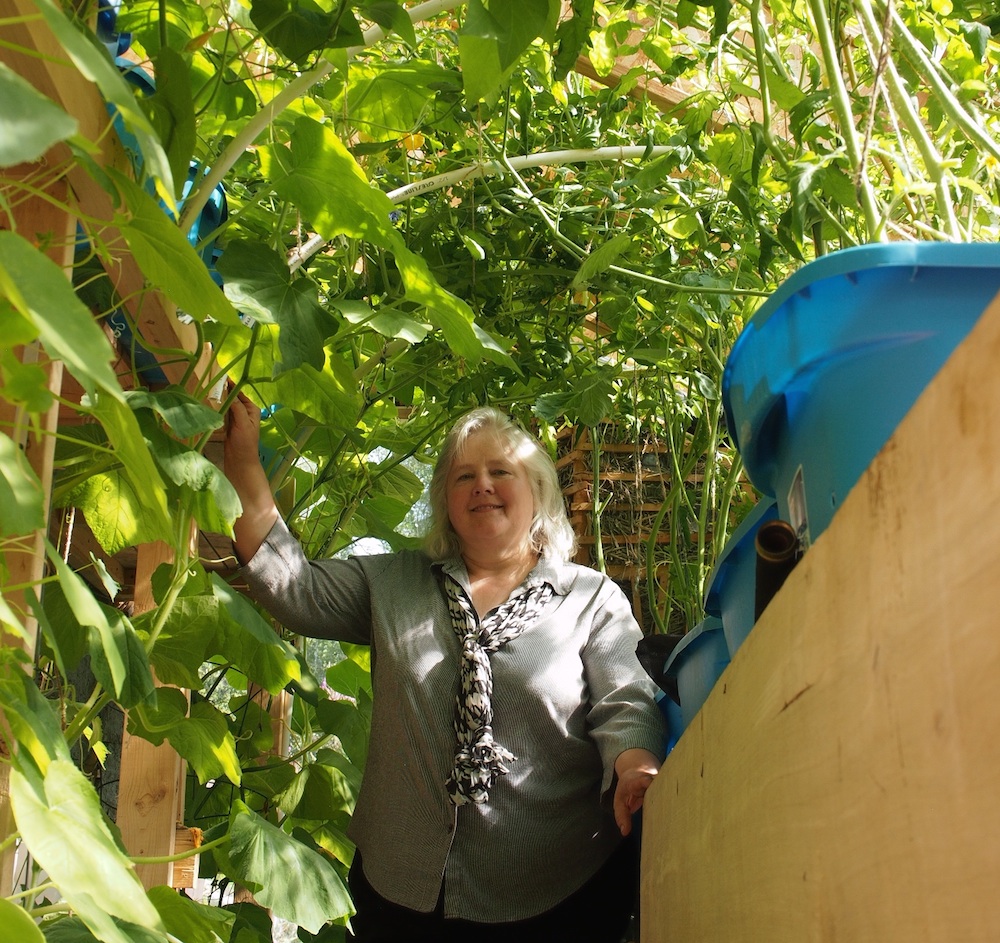Meet Cindee Karns, Alaska’s Permaculture Pioneer
Growing much of her family’s food and teaching permaculture classes keeps Cindee Karns plenty busy. Permaculture principals—caring for the earth, caring for people and sharing the extra—define everything she does.
Cindee and her husband, Curt, live on a mountainside in Eagle River valley where she teaches everything from gardening to greenhouse construction to composting following nature’s tried and true ways. Their garden and fledgling apple orchard combined with hunting, fishing, foraging and buying local foods make up about 75 percent of their diet, a feat they’ve been working toward since participating in an “eat local” challenge among friends in 2011.
A former middle school teacher, Cindee finds teaching hands-on permaculture skills like lasagna (layer) gardening or straw-clay greenhouse construction to adults even more rewarding than practicing them. “Usually students are either totally amazed and their eyes are opened to a new way of being instead of the consumeristic path our current culture is traversing, or they feel relieved” says Cindee. Learning permaculture’s patterns and methods can be a long, confusing road to travel alone. It gets frustrating, she says, and people quickly give up trying to be more earth friendly. But once people understand the systems of permaculture, it’s much easier to see that every decision made is part of the puzzle. Permaculture is often called a decision-making tool.
Many of Cindee’s students continue their permaculture path far beyond her classroom: Rainey in Anaktuvuk Pass is setting up the community’s first high tunnel and has chickens in the Arctic; Larissa has transformed her urban yard and has a permaculture club at Anchorage’s South High School; Jerami is building aquaponics systems and geodesic greenhouse domes; Megan at Spring Creek Farm is incorporating permaculture into the farm; Michelle is running Yarducopia: matching gardeners with gardens in people’s yards.
However successful Cindee is with her permaculture classes and adventures it’s always an ongoing experiment here in Alaska. She says it’s getting harder to grow brassicas on her flat garage roof—it’s too hot with the changing climate. Last year she and Curt planted three crops of turnips and the mice ate them all. She rebuilt the space this year as a layered sheet mulch bed and surrounded it with rhubarb to keep the moose out (moose don’t eat rhubarb) and planted onions all around in hopes the mice stay away.
Cindee taught a hands-on urban sustainability course with the help of other certified permaculture experts this summer that focused on making urban connections to food and other resources. “There are so many problems with living in a modern city,” says Cindee. “No high tunnels, no root cellars, no large animals, etc. Some of our food is coming in from farmers in the [Matanuska] valley, but not much.”
Several other organizations have come together to create the first urban community farm in Anchorage. Cindee’s cohort Lisa DePiano, who teaches permaculture at UMass Amhearst, promotes creating urban systems in times of plenty so that if some part of the food system fails, communities can take care of themselves. Students will learn how to deal with city codes, form partnerships and co-ops, set up sharing systems, build gardens and collect water for them, reuse waste,and butcher a meat animal. They’ll leave knowing how to build their own neighborhood systems right in the city.
To learn more about Cindee Karns and permaculture in Alaska, visit http://alaskapermaculture.com/ or https://alaskanbioshelter.com/.





